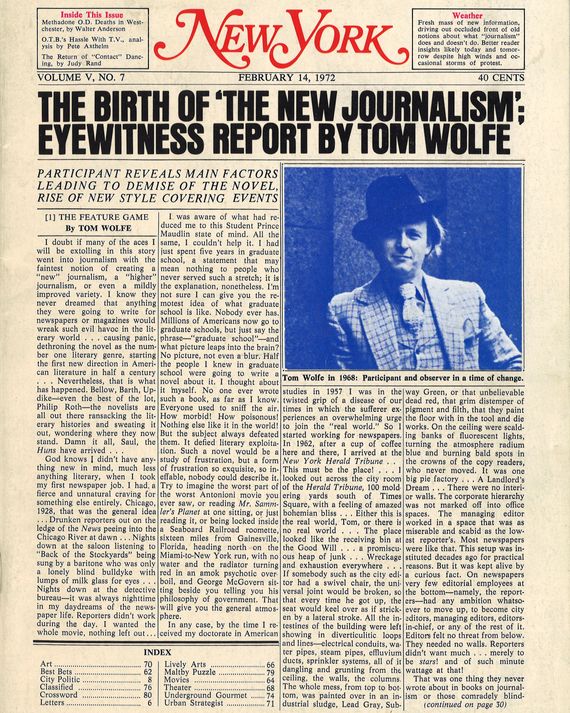7 Easy Facts About News Articles Described
7 Easy Facts About News Articles Described
Blog Article
Not known Factual Statements About News Articles
Table of ContentsThe Best Strategy To Use For News ArticlesNews Articles Things To Know Before You Get ThisSome Known Questions About News Articles.The smart Trick of News Articles That Nobody is DiscussingThe 5-Second Trick For News Articles
Great understanding of various subjects gives students an one-upmanship over their peers. Also though electronic and social networks are conveniently available, we must not neglect how vital it is to read the newspapers. Parents must try and inculcate the habit of reading a paper as an everyday routine to proceed the tradition of the revered print tool.News tales additionally include at least one of the complying with crucial characteristics relative to the intended audience: distance, importance, timeliness, human interest, strangeness, or effect.
Within these limits, news stories additionally aim to be thorough. Among the larger and much more highly regarded papers, fairness and equilibrium is a significant element in presenting information.
Papers with a global audience, as an example, have a tendency to use an extra official style of composing. The particular options made by an information outlet's editor or content board are typically gathered in a design overview; usual style overviews consist of the and the United States News Style Book. The major objectives of news writing can be summarized by the ABCs of journalism: precision, brevity, and quality.
The Ultimate Guide To News Articles
As a rule, journalists will not use a long word when a short one will do. They use subject-verb-object construction and brilliant, energetic prose (see Grammar). They offer narratives, instances and metaphors, and they hardly ever depend on generalizations or abstract concepts. News authors try to stay clear of making use of the very same word more than once in a paragraph (in some cases called an "echo" or "word mirror").
Nonetheless, headings in some cases omit the subject (e.g., "Jumps From Boat, Catches in Wheel") or verb (e.g., "Feline lady lucky"). A subhead (additionally subhed, sub-headline, subheading, subtitle, deck or dek) can be either a subservient title under the primary headline, or the heading of a subsection of the short article. It is a heading that precedes the primary text, or a group of paragraphs of the primary text.

Additional signboards of any of these types might appear later in the short article (specifically on succeeding pages) to lure additional analysis. Such signboards are additionally used as tips to the short article in other sections of the publication or website, or as advertisements for the item in various other magazine or websites. Regular structure with title, lead paragraph (summary in strong), other paragraphs (information) and get in touch with info.

Example of a hard-lead paragraph NASA is recommending an additional room project. The budget plan requests around $10 billion for the task.
The NASA announcement came as the company requested $10 billion of appropriations for the task. An "off-lead" is the 2nd crucial front page information of the day. The off-lead shows Learn More Here up either in the leading left edge, or straight below the lead on the right. To "bury the lead" is to start the short article with history info or details of second value to the readers, forcing them to find out more deeply right into a short article than they need to have to in order to find the important factors.
The Main Principles Of News Articles
Usual usage is that or more sentences each develop their very own paragraph. Reporters typically describe the organization or framework of an information tale as an upside down pyramid. The essential and most intriguing aspects of a story are put at the start, with supporting details complying with in order of lessening significance.
It allows individuals to explore a subject to only the depth that their interest takes them, and without the imposition of details or subtleties that they might think about pointless, however still making that information offered to more interested visitors. The inverted pyramid framework also makes it possible for posts to be cut to any type of arbitrary size during layout, to suit the area available.
Some authors start their stories with the "1-2-3 lead", yet moved here there are several sort of lead available. This style inevitably starts with a "5 Ws" opening paragraph (as defined over), adhered to by an indirect quote that serves to support a significant aspect of the initial paragraph, and afterwards a direct quote to support the indirect quote. [] A twist can describe several points: The last tale current program; a "delighted" tale to finish the show.
Longer posts, such as magazine cover posts and the pieces that lead the within sections of a paper, are recognized as. Feature tales vary from straight information in numerous methods.
Top Guidelines Of News Articles
The journalist typically information communications with meeting subjects, making the item more personal. An attribute's first paragraphs often relate an appealing moment or event, as in an "anecdotal lead". From the particulars of a person or episode, its view rapidly broadens to generalizations concerning the tale's subject. The area that indicates what a function is about is called the or billboard.

The Editor's Tool kit: A Referral Guide for Beginners and Professionals (2001) Allan M. Siegal and William G. Connolly. The New York Times Handbook of Design and Use: The Official Design Guide Utilized by the Writers and Editors of the World's Many Authoritative Paper (2002) M. L. Stein, Susan Paterno, and R.
Report this page